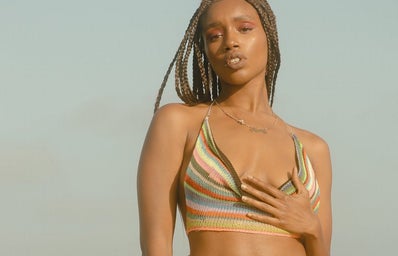From larger-than-life tulle skirts to structured suits, fashion is the most visible expression of identity. Fashion abides by norms; fashion breaks norms. Fashion follows the cultural landscape; fashion is the cultural landscape.
Now, more than ever, fashion serves as a reflection of gender. With increased awareness of gender non-conforming and trans individuals, brands have begun to include these individuals in their creation process. For cisgender people, playing with gender in fashion, the masculine and the feminine, can be a pastime. For the gender non-conforming and trans community, gender takes unique and powerful forms within their identities.
Yet, with every societal change comes a chance for exploitation. Some brands have begun to think creatively about such relationships, while others care more for their appearance to the public. For big brands, the question is not how they can include these individuals, but rather, how they can exploit them.
Within this dichotomy lies a need for distinction. The public does not fully understand the distinction between gender-fluid fashion and unisex or gender-neutral fashion. Gender-fluid fashion disrupts norms, shifting common conceptions away from a woman in a dress, a man in a suit. Conversely, unisex fashion can be worn by anyone regardless of gender. Unisex fashion does not push boundaries like the former, as a simple striped polo or white v-neck gains its title.
Gender-neutral or unisex fashion, despite its good intentions, minimizes gender non-conforming and trans individuals. It hides the distinction between gender when there is a chance to embrace such distinctions. Fashion should not blur the lines between gender, but rather, reinforce the ways that gender defines us — even if gender serves as a form of liberation.
Gender proves important since the beginning of time. Adam and Eve. Cleopatra and Mark Antony. Romeo and Juliet. Gender defines history. Although gender was once clearly defined, with little room for reinvention, today, we must reorganize how we imagine it. Gender exists, but it exists in plentiful forms.
Gender-fluid fashion places gender non-conforming and trans individuals at its forefront. Small, authentic labels have a mission to empower the communities from which they stem.
One such brand, No Sesso, meaning “no gender” in Italian, does just that. According to The New York Times, designer and co-founder Pierre Davis “became the first trans woman to present a collection on the official New York Fashion Week calendar.” Davis comes from the community for which she designs. Her process is far from artificial. This is not a publicity stunt, but a way of life for her and her brand. Gender non-conforming and trans individuals interact with the brand prior to, during, and after production, in stores, on the runway, and in conceptualization. This fluidity is not a trend to be capitalized on; it is a way of life.
Another such brand, Art School, utilizes innovation. Non-binary creative director Eden Loweth told Harper’s Bazaar, “As a trans person goes through hormone treatments, it changes the way that fabric sits on their body.” Through such in-depth understanding, Loweth utilizes bias cut, in which cutting diagonally allows for greater stretch. Would a creative director who is not part of the community to which they design fully understand how to create garments for these individuals?
These designers design for their own bodies, providing them with a unique understanding and motivation to create. This new wave of designers is gaining traction.
Harris Reed, who identifies as gender-fluid, designed for Harry Styles in Vogue’s December issue. They also dressed Styles in his 2017 and 2018 world tour, aiding in his celebrity transformation. Styles is known for his exploration of the feminine, inspiring millions of fans to explore their relationship to gender.
So where do large-scale companies fit into this discussion of gender in fashion? How are gender non-conforming and trans individuals benefiting from their involvement? Back in 2016, Zara launched its unisex Ungendered line which mostly included unisex basics such as t-shirts, sweatshirts, and denim. Initially, the brand was labeled progressive for its efforts. Yet, was this simply a marketing ploy that utilized gender to symbolize progressivity? How did Zara account for the gender non-conforming and trans community? How did it account for their unique bodies?
The truth is simple: it didn’t.
Ungendered translates to unisex, which has less to do with gender identity and unique identities at all. Modeled on all cisgender models, the line lacked strong shape or color, leaning more towards masculine clothing. The line failed to relate to gender non-conforming individuals, selling Ungendered to men and women instead. The line lacked boldness. It put forth the idea that genderless means plain. The line also included no resemblance of typically feminine clothing, playing it safe. As a massive fast-fashion retailer, it is easy to think Zara hoped to profit off of false progressivity.
Independent designers such as No Sesso, Art School, and Harris Reed capture their community in ways big brands cannot. However, they do not have the capital to bring these garments to the masses. Yet, they are starting a much-needed conversation. Although the execution of unisex or gender-fluid garments by large-scale companies often proves unsuccessful, it allows the general public to realize change is necessary. If these big brands hope to continue this conversation, they must include individuals from the gender non-conforming and trans communities. What is the point of a gender-fluid line that is seen on a cisgender woman, anyway?
It’s time for inclusivity and fashion to merge. This is not solely through designs but through the entirety of the creation process. On the runway, during creation, and even during conception, new voices must be heard.
Will gender-fluid fashion become mainstream? Should it become mainstream?
The questions are endless. It is time to support the gender non-conforming and trans community in fashion. This is not a community to capitalize on, but to celebrate. Celebrate a departure from decades of hatred and dismissal. Although this movement has not yet reached its full potential, change is near.
So, Gen Z, listen to these voices.


